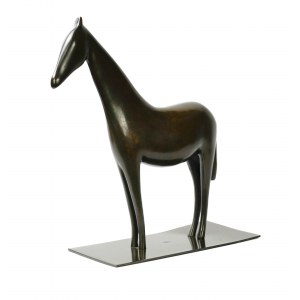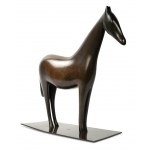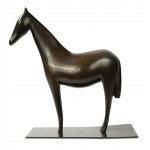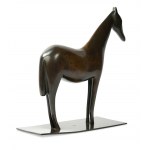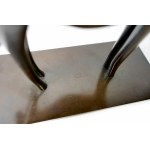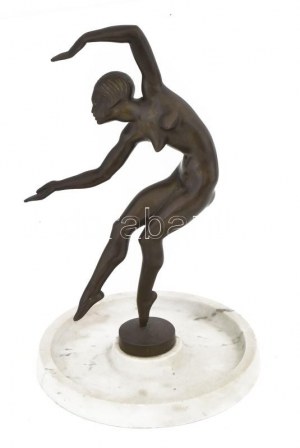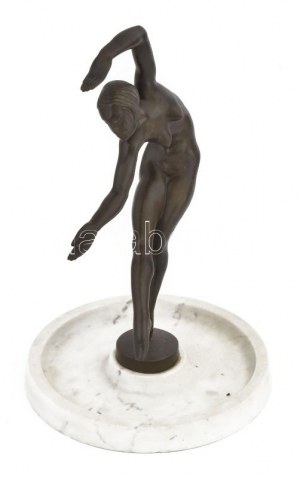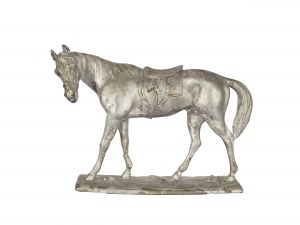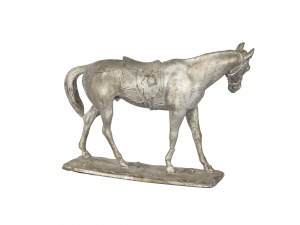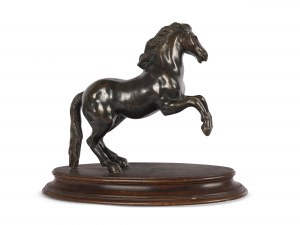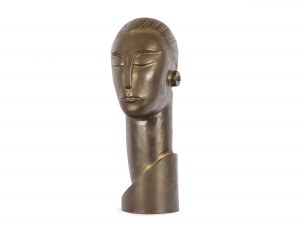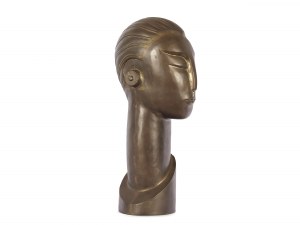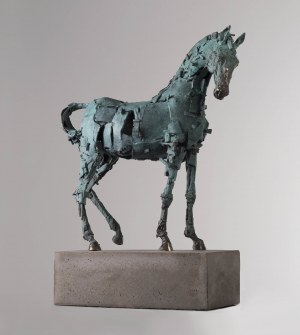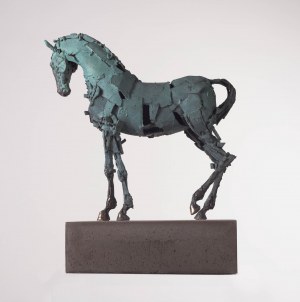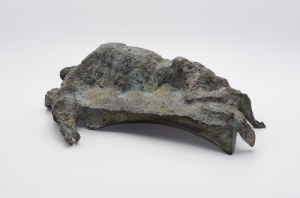bronze, brown patinated, 26,5 cm x 22 cm x 10,5 cm, signed in the cast, one of 14 copies in total, plinth bent, partially slightly scratched, underneath adhesive residues, Literature: Cat. Rais. Schilling 66b
Ewald Mataré was an important German sculptor and graphic artist who initially studied painting at the Berlin Art Academy with Lovis Corinth between 1907 - 1914 and turned to sculpture within the 1920s. Woodcuts and sculptural representations of animals are among the artistic-craftsmanship techniques that Mataré particularly valued. He reduced the animals' bodies to dimensional basic forms and took up the intellectual challenge of translating the anatomy of the animal into precisely these basic forms. The material chosen was predominantly wood, the natural grain of which the artist was able to emphasise through smooth surface polishing. Here, it must be pointed out that Mataré is not convinced of the activity description of carving - rather, it is said that as an artist he sculpted the animals out of a plastic thought. The artist himself describes his work on the animal figures in those years as a ''princely pleasure''. He elaborates on this in 1959 during a studio visit of the Göttingen Institute for Scientific Film. Mataré describes a happy time in which he simply formed his animals out of himself, without any purpose, without any necessity. He remembers himself as a single young man, who could decide for himself to go out into the countryside in summer, to the sea, to Spiekeroog, to Sylt and to Finland. Certainly, these depictions of animals are leaned on the oldest art-historical depictions of animals, which are preserved to this day, for example, as wall paintings made of pure earth pigments in the cave of Lascaux (France). Thousands of years old relics of art, that show the animal as a companion of man that is essential for survival, as an animal of prey, as a sacred animal and as a part of nature. The Finnish horse dates from 1929/1930, when the artist travelled to Finland with a few precious woods. On site, the sculpture was made of wood, which was then set in bronze in an intermediate casting. Ewald Mataré worked out the further abstraction until some features of the animal were not only reduced but even disappeared. The Finnish horse can be classified even before Mataré's works were considered degenerate during National Socialism. Likewise, even before the artist turned to religiously dominated themes and urban commissions: In the years 1948-1956, he created four cathedral portals, the dove fountain at the west portal, the Gürzenich doors, the Lochner column, the mosaic at Alter Markt and other works for the city of Cologne. On the one hand, this confidence in his art to influence the cityscape honours him. But Mataré also knows about the beautiful time when he formed his animals independently and from within himself.
最近浏览过的
登录以查看拍品列表
收藏
登录以查看拍品列表



